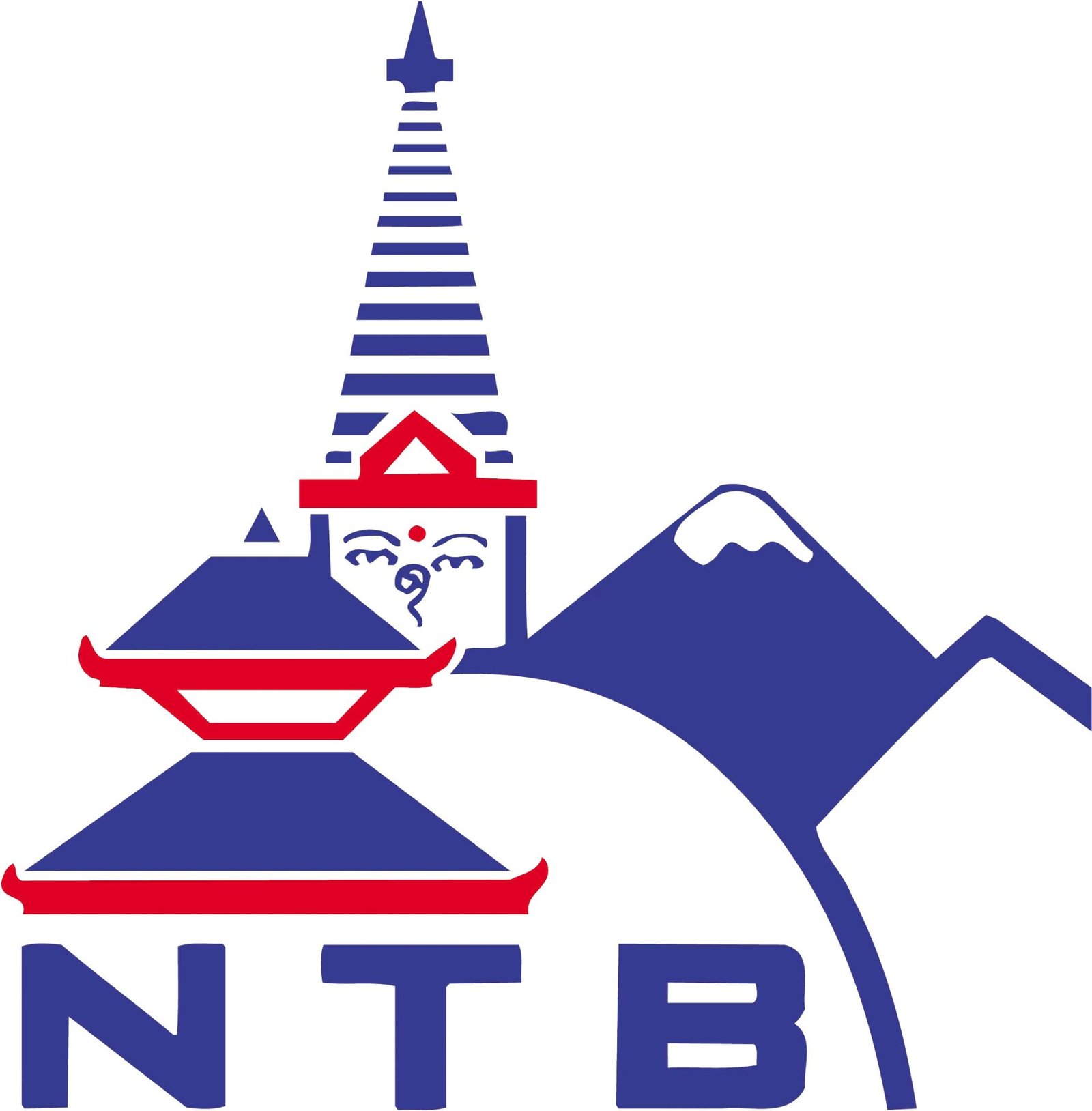Why Everest Base Camp is a Bucket List Destination
Everest Base Camp (EBC) is one of the busiest trekking locations in the world. It is situated at the base of Mount Everest, the highest mountain in the world. Thousands of trekkers visit EBC annually for the scenic Himalayan view and adventure. Getting to the base of this tremendous iconic mountain is a dream for many nature enthusiasts.
How hard is it to go to Everest Base Camp? Travelling to EBC is about more than just visiting the site. There is a chance to observe picturesque Sherpa villages and ancient monasteries. You can observe colourful prayer flags, spinning wheels, and prayer mountains. Trekkers can also take part in the local community's hospitality.
Ascending to Everest Base Camp is a thrilling experience for the adventurous. It is a union of nature's scenic beauty, exciting trails, and historical treasures, which is why it is one of the attractions everybody wants to visit.
Physical Fitness: How fit are you for an EBC trek?
How hard is it to get to Everest Base Camp? Trekking to Everest Base Camp (EBC) is a highly demanding undertaking that requires physical fitness. You do not need to be an athlete, but some minimum strength, endurance, and overall physical fitness are required to enable a safe and pleasant journey.
Rough terrain - often steep inclines both up and down slopes, with uneven and potentially rocky surfaces. Preparing the body for the job is the most crucial step in getting a positive experience.
Cardiovascular Fitness
Cardiovascular fitness is essential for the EBC trek as it involves walking in high altitude conditions with reduced oxygen supply. Physical exercise, such as running, swimming, cycling, or brisk walking, has also contributed to improving cardiac and respiratory functions. Over time, gradually elevate workout intensity and exercise time to improve fitness (i.e., endurance).
Leg Strength and Endurance
Strong legs are essential for handling steep ascents, descents, and uneven trails. Include exercises (e.g., squats, lunges, step-ups) in your exercise program. Hiking in sloped or uneven terrain is an excellent conditioning tool.
A treadmill with an established incline protocol should be used when hiking is physically impossible. Carrying a full rucksack on practice hikes can increase fitness and condition to the level of the real trek.
Core and Balance
Evidence for the role of the strong core in mediating stability and balance on undulating natural terrain has been presented. Muscular exercises (e.g., planks, crunches, yoga) are helpful. Balance exercises, e.g., standing on one leg or exercising on a balance board, can also facilitate safe navigation on difficult terrain.
Altitude Acclimatization
Fitness is good but not enough to prepare for high altitude at Everest Base camp Trek. The trek involves gradual acclimatization to prevent altitude sickness.
Fitness in peak condition provides the biological ability to build up your body's resistance. Still, it will also necessitate compliance with the trekking itinerary with scheduled days off to acclimatize at altitude. Hydration, nutrition and following your body are each essential.
Mental Preparedness
Of course, the EBC trek is not only physically demanding but mentally as well. Extensive travel, cold temperatures, and poor accommodation conditions can push the mind to its limit. Mindfulness, meditation, and visualization for the positive self can lead to greater focus and motivation.
Creating a Training Plan
Begin fitness training 3-6 months before the trip. Begin with moderate exercises and gradually increase the intensity. Include a mix of cardio, strength, and flexibility exercises.
Where possible, practice hikes with a backpack to approximate trek conditions. Consult a fitness trainer for personalized guidance.
Everest Altitude Challenges: Coping with High Altitude and Acclimatization
Altitude is one of the most difficult challenges hikers face while going to Everest Base Camp (EBC). The higher you go, the less dense the air and the less oxygen. This can cause altitude sickness, which affects many trekkers.
Susceptibility is a characteristic of certain individuals or species that can lead to attachment to invasive pathogens. Common symptoms include headache, nausea, dizziness, fatigue, and dyspnea. In the most severe forms, altitude sickness can result in fatal high-risk diseases such as High-Altitude Pulmonary Edema (HAPE) or High-Altitude Cerebral Edema (HACE).
Acclimatization is essential to overcome these challenges. It is common for EBC trek itineraries to have rest days at higher altitudes that enable your body to reach acclimatization. Just do this today and let your body get some rest so it can produce more red blood cells and circulate oxygen better.
Slow walking, hydration, and alcohol avoidance are helpful, too. Eating a balanced diet and taking breaks during your trek is important for keeping your energy levels up.
If you experience symptoms of altitude sickness, inform your guide immediately. Generally, symptom relief is provided for low-altitude descent.
Certain trekkers use medications such as Diamox (acetazolamide) to prevent or lessen symptoms. However, it is strongly advised that any medication be discussed with a doctor before taking it. It should be noted that slowing down and listening to the body, not hustling, is the rationale of altitude safety.
Trail Conditions: What to Expect on the Trekking Path
The trekking route to Everest base camp combines scenic and strenuous views. Trekkers traverse thick forests, rocky faces, steep slopes, and open gullies. Trails are generally rough and include rubble, boulders, gravel, etc.
As you get higher, the terrain becomes more rugged, with some sections covered in snow during colder months. Tight trekking boots and adequate grip are required to traverse these trails safely.
Suspension bridges are another exciting part of the trek. These steel-abutted bridges carry over deep gorges and wild rivers. Rarely, they may tip one way to and fro as you walk over them, producing a shock through the spine at the point that you move.
You'll also encounter steep ascents and descents, some of which can be tiring but rewarding. Of course, a fairly strenuous uphill detour is required to reach Tengboche levels and Kala Patthar, but this is not too much in the awesome scale of the Himalayas a little.
Upon reaching the destination, the view is breathtaking, and the air gets thinner, which may be scary at times, but the achievement and the memory of having finished the last step to Base Camp is unforgettable.
Difficult but rewarding with amazing vistas of glaciers, summits and picturesque landscapes that are always the reward of the effort. Planning especially effective preparation, including wearing the most suitable clothing and avoiding exertion, are the conditions that entirely ensure you can enjoy the enjoyable experience safely.
Weather and Season: How They Impact the Everest Base Camp Trek Difficulty
Weather and season are major determinants of the Everest Base Camp Trek Difficulty of The Everest Base Camp (EBC) hike. Safety and enjoyment dictate that it is a good idea to plan for the season in which to hike, i.e., the advantages/disadvantages of each season from the hiker's perspective.
Spring (March to May):
The spring season is one of the best times to trek from EBC. It is generally benign weather with a relatively cloudless sky, which creates an amazing sweeping scene at the onset of the mountains. Walks are framed by festive rhododendrons, which enhance their beauty. Unfortunately, it is aseasonal, so the paths and tea houses are crowded.
Autumn (September to November):
Autumn is another ideal time for the trek. The air is dry, and the sky is transparent and agreeable. This season offers spectacular views of snow-clad peaks. Just as in spring (it's trek season), the trails will be crowded, the hotels will be filled, and everyone—and everything—will be set on a guided tour.
Winter (December to February):
Winter is accompanied by low temperatures and snow, specifically at high elevations. Although the paths are not congested, hikers will experience icy and cold weather on the trails. The scenery is pretty, but the weather is freezing, which, in turn, makes the way very difficult.
Monsoon (June to August):
Monsoon season is the most undesirable period for trekking due to heavy rain, muddy trails, and poor sight. Lowerments are vulnerable to leeches and landslides and, hence, fatal. Nevertheless, it is more peaceful because of the rain-washed scenery and fewer people on the trail.
The season to choose depends on personal preference and capacity to deal with environmental factors. With the right preparation and equipment, trekkers can go any season.
How long does it take to get to Everest Base Camp?
The Everest Base Camp trek usually lasts 12 to 14 days, depending on the itinerary and acclimatization requirements. During this period, the trek to Base Camp and the return journey are already made up. On average, trekkers walk 5–7 hours daily and cover 10–15 km daily.
The itinerary includes two acclimatization stays, Namche Bazaar (3,440 m) and Dingboche (4,410 m). These days of rest are also important for acclimatization to high altitude and preventing altitude sickness. They also allow trekkers to explore the vicinity of villages and enjoy the outdoors.
The trip begins with an arrival at Lukla and an itinerary along valley villages, including Phakding, Namche Bazaar, Tengboche, and Lobuche. However, the way to Base Camp (5 364 m) is a gruelling uphill trek with rocky terrain. Having arrived at Base Camp, people tend to walk back in the same manner as the wayside, which is a slightly shorter walk.
Daily walking time is influenced by trial complexity and elevation. On certain days, as with the trek to watch the sunrise at Kala Patthar, there are many hours of walking and steep ascents. A middle-length way offers scope for planning, chilling, and simply taking in the experience.
Accommodation and Food: Staying Comfortable Along the EBC Trek
Visits to the Everest Base Camp trek are largely in the form of teahouses. They are small family-run lodges and provide basic but cosy accommodation. Almost every teahouse has small rooms with two mattresses, blankets and shared bathrooms.
Certain teahouses in the village (e.g., Namche Bazaar) communities offer hot-bathroom facilities and Wi-Fi. But the higher the user goes, the lower the quality of the facilities will be, and even utilities, that is, the option of having to purchase or adjust the heating/hot water, could be upgraded to optional extras.
Meals are another highlight of the trek. Teahouses provide food, including dishes from Nepal (e.g., dal bhat (lentils, rice, and curry), pasta, noodles, soup, and pancakes). The food is fresh, nutritionally dense, and meant to boost energy for long hikers. Trekkers are greatly fascinated by dal bhat since it is an endless source of food they require to survive and sustain their trek.
The feeling of comfort is somehow related to the way of "living in a tea house. Those who do part of the work for the cold nights spent with a sleeping bag, a healthy diet, and talking to locals and other trekkers make the vacation enjoyable.
Mental Preparation: Staying Motivated Throughout the Journey
Not only is it a very difficult physical challenge, but also very difficult mentally. Sustained periods of walking, high elevations, and shifting weather can challenge your willpower and resolve. Staying motivated is key to completing the trek.
Mental preparation may be accomplished by having realistic expectations. It is hard, but knowing beforehand makes the journey easier because you can approach each day with optimism. If the trip consists of discrete steps, e.g., progressing to the next village or checkpoint, it seems to be a long way from being an unattainable event.
The scenery is wonderful and symbolizes the final goal (East Base Camp in Everest), so it is an incentive for someone not to lose heart. Having friends or participating in a guided tour at a party is also advantageous. Communication of experience among the group may serve to empower in the face of challenges.
Mindfulness techniques and mindfulness at the moment can also reduce stress. Victors should take pride in themselves, even when crossing a suspension bridge or scaling a steep trail path. Just be patient and slow and trust your practice.
Cost and Resources: Are There Options to Make it Easier?
Trekking to Everest Base Camp is flexible regarding wallet requirements and physical fitness. Adding a guide or porter is an extremely regular addition to a trekker's itinerary. Guides provide information, direction, and protection, and porters carry your pack, freeing you from the pack's weight and allowing you to focus on the trek.
Helicopter tours are an opportunity for convenience seekers. However, trekkers are willing to fly (out of) Base Camp, which reduces the time and effort required to travel. Treks are costly, but they provide the most outstanding views and comfortable experience for a hiker of the Himalayas.
Is the Everest Base Camp Trek Worth the Effort?
The EBC Trek Difficulty is undoubtedly challenging, but the rewards far outweigh the hardships. Standing at the base of the world's highest mountain is a once-in-a-lifetime experience. The trek offers breathtaking views and a deep connection with nature and the Sherpa culture.
Every step of the journey, from crossing suspension bridges to reaching the iconic Base Camp, is filled with moments of awe and accomplishment. The camaraderie with fellow trekkers and the warm hospitality of the locals make the experience even more special.










